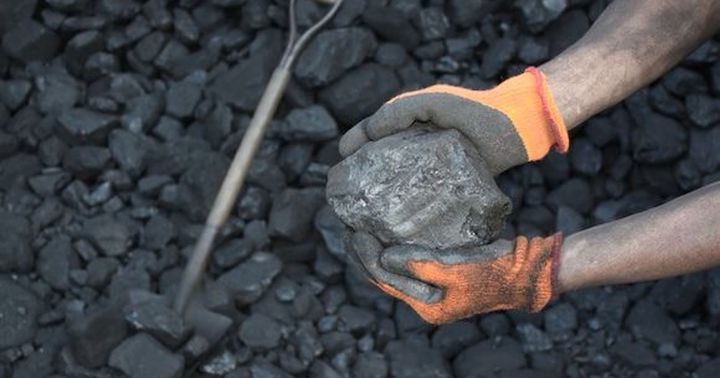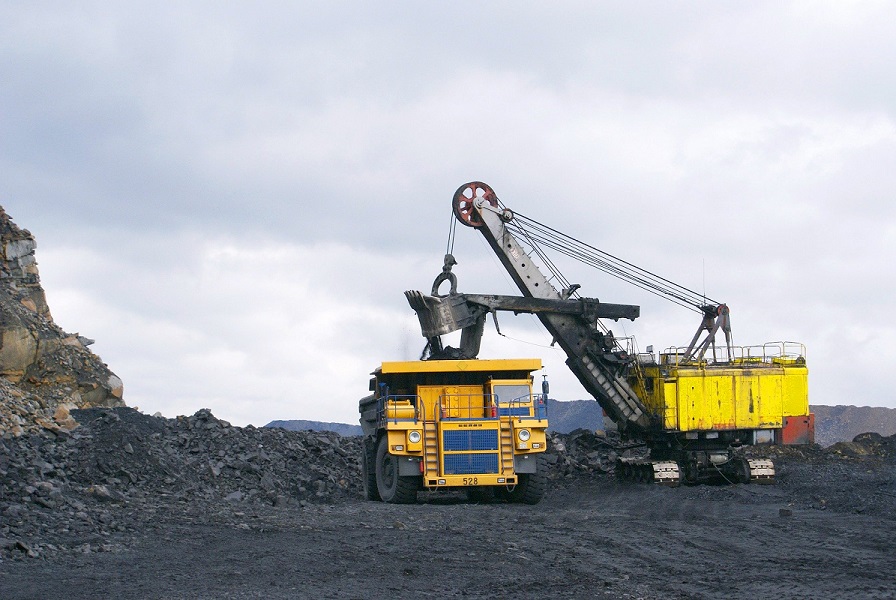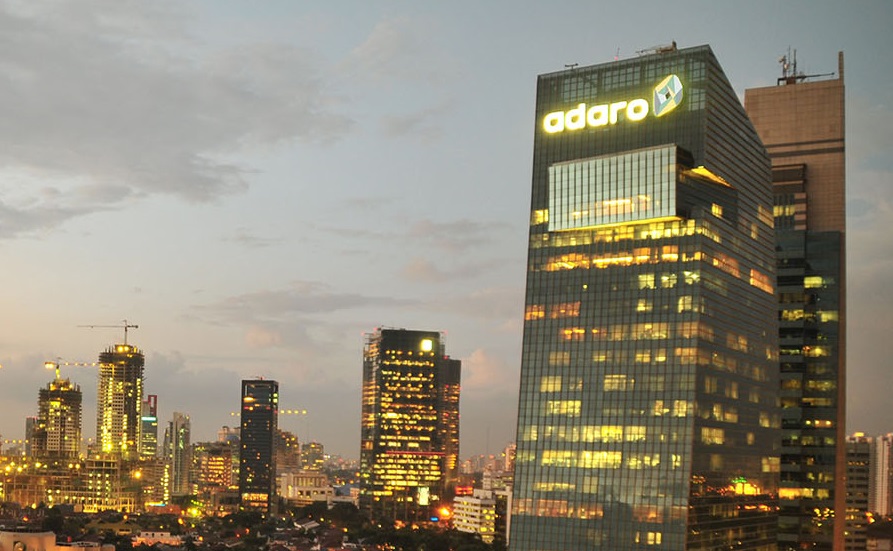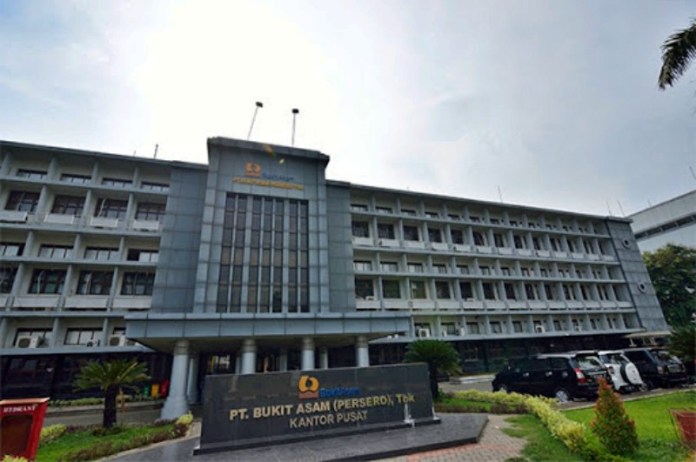
Giant Coal Issuers Struggled Throughout 2020, Only HRUM Has Managed to Increase Profits
- Big issuers of the coal mining sub-sector listed on the Indonesia Stock Exchange (IDX) must file for losses in the 2020 financial year. Of the six companies, only PT Harum Energy Tbk. (HRUM) managed to book a profit. In fact, the value skyrocketed to hundreds of percent.
Insight Langit Biru
JAKARTA – Big issuers of the coal mining sub-sector listed on the Indonesia Stock Exchange (IDX) must file for losses in the 2020 financial year.
Of the six companies, only PT Harum Energy Tbk. (HRUM) managed to book a profit. In fact, the value skyrocketed to hundreds of percent. Meanwhile, the other five experienced a deep decline in profit. In fact, two of them had to lose money over the past year.
Based on the summary of the financial statements of each company that ended in 2020 by TrenAsia.com, the following is the order of their performance from the lowest to the most collapsed.
- 11 Bank Biayai Proyek Tol Serang-Panimbang Rp6 Triliun
- PTPP Hingga Mei 2021 Raih Kontrak Baru Rp6,7 Triliun
- Rilis Rapid Fire, MNC Studios Milik Hary Tanoe Gandeng Pengembang Game Korea
- Anies Baswedan Tunggu Titah Jokowi untuk Tarik Rem Darurat hingga Lockdown
- IPO Akhir Juni 2021, Era Graharealty Dapat Kode Saham IPAC
- HRUM
Mining company, PT Harum Energy Tbk (HRUM) made a profit of US$59 million or the equivalent of Rp842.8 billion (exchange rate of Rp14,285 per US dollar) throughout 2020.
This profit shot up to 219% year-on-year (yoy) compared to profit of US$18.5 million or Rp264.3 billion in 2019.
Despite the skyrocketing profit, the company’s revenue fell 39.8% yoy from Rp3.74 trillion in 2019 to Rp2.25 trillion last year. The total revenue was contributed from export coal sales contracts amounting to Rp2.09 trillion and rental income of Rp160.4 billion.
- 11 Bank Biayai Proyek Tol Serang-Panimbang Rp6 Triliun
- PTPP Hingga Mei 2021 Raih Kontrak Baru Rp6,7 Triliun
- Rilis Rapid Fire, MNC Studios Milik Hary Tanoe Gandeng Pengembang Game Korea
- Anies Baswedan Tunggu Titah Jokowi untuk Tarik Rem Darurat hingga Lockdown
- IPO Akhir Juni 2021, Era Graharealty Dapat Kode Saham IPAC
In fact, the cost of revenue has been pressed lower. In the 2019 the loss value was Rp2.78 trillion, while last year it was reduced to a loss of Rp1.63 trillion.
The cash and the cash equivalents of the company also decreased by 6.8% yoy from Rp3.23 trillion to Rp3.01 trillion in 2020.
Likewise, total liabilities of Rp627.1 billion, decreased by 7.38% yoy compared to Rp677.1 billion in 2019.
On the contrary for total equity, the amount was increased by 13.7% yoy to Rp6.49 trillion. It is known that in 2019 the total equity of HRUM was recorded at Rp5.7 trillion.
The assets of the company in this period were also fairly good, or still able to grow 12.6% yoy from Rp6.3 trillion in 2019 to Rp7.1 trillion in 2020.
For information, as of 2020 the largest shareholder of HRUM was held by PT Karunia Bara Perkasa at 79.79%. Meanwhile, the public narrows to 13.55%, PT Bara Sejahtera Abadi 0.09%, and the rest were from directors and treasury shares.
2. PTBA
In second place, state-owned coal mining issuer PT Bukit Asam Tbk (PTBA) posted a profit for the year that is attributable to the owner of the parent entity of Rp2.39 trillion in 2020.
This achievement fell 41.17% yoy compared to the company’s realized net profit in the previous year, which reached Rp4.06 trillion.
Based on the financial statements released by the company through the Indonesia Stock Exchange (IDX), revenue of PTBA also decreased by 20.48% yoy to Rp17.33 trillion from Rp21.79 trillion.
Even so, the company managed to reduce the cost of revenue to Rp12.76 trillion during the 2020 pandemic. This figure has decreased by 10% compared to Rp14.18 trillion in 2019.
General and administrative expenses as well as sales and marketing expenses for PTBA has also decreased last year. The decreases were respectively 25.57% and 16.45%.
- 11 Bank Biayai Proyek Tol Serang-Panimbang Rp6 Triliun
- PTPP Hingga Mei 2021 Raih Kontrak Baru Rp6,7 Triliun
- Rilis Rapid Fire, MNC Studios Milik Hary Tanoe Gandeng Pengembang Game Korea
- Anies Baswedan Tunggu Titah Jokowi untuk Tarik Rem Darurat hingga Lockdown
- IPO Akhir Juni 2021, Era Graharealty Dapat Kode Saham IPAC
Meanwhile, the total short-term liabilities PTBA’s decreased on an annual basis to Rp3.87 trillion last year, from Rp4.69 trillion in 2019. The same thing happened to the total long-term liabilities of the company which fell from Rp2.98 trillion to Rp3.25 trillion in 2020.
That way, the total liabilities of the company as a whole decreased by 7.27% yoy from Rp7.68 trillion in 2019 to Rp7.12 trillion at the end of 2020. However, the equity of PTBA equity also slipped by 8.05% to Rp16.94 trillion from Rp18.42 trillion in 2019.
The cash and cash equivalents of the company also depleted with a percentage of 8.74% on an annual basis to Rp4.34 trillion last year compared to Rp4.76 trillion in the previous year. With these records, the total assets of PTBA decreased by 7.82% yoy from Rp26.10 trillion to Rp24.06 trillion.
3. ADRO
PT Adaro Energy Tbk (ADRO) experienced a decline in profit of up to 63.7% yoy from Rp5.69 trillion in 2019, to Rp2.06 trillion throughout 2020.I
In addition, the operating revenues were recorded at US$2.53 billion or Rp35.63 trillion in 2020. This value decreased by 27% due to a decline in average selling price (ASP) of 18% and sales volume of 9%.
ADRO President Director and CEO, Garibaldi “Boy” Thohir, said the performance of the company reflects the resilience of an integrated business model.
“This is due to the focus on efficiency and operational excellence in all lines of business,” said Garibaldi, through the disclosure of information on IDX on Friday, March 5, 2021.
ADRO succeeded in reducing the cost of goods sold during the 2020 pandemic. Over the past year, the cost of goods sold by ADRO fell 21.29% yoy to US$2.53 billion or Rp35.7 trillion (Jisdor Rp14,084 per US dollar) from US$3.46 billion, equivalent to Rp48.69 trillion in 2019.
- 11 Bank Biayai Proyek Tol Serang-Panimbang Rp6 Triliun
- PTPP Hingga Mei 2021 Raih Kontrak Baru Rp6,7 Triliun
- Rilis Rapid Fire, MNC Studios Milik Hary Tanoe Gandeng Pengembang Game Korea
- Anies Baswedan Tunggu Titah Jokowi untuk Tarik Rem Darurat hingga Lockdown
- IPO Akhir Juni 2021, Era Graharealty Dapat Kode Saham IPAC
This was followed by a 29% decrease in the operating expenses of the company to US$165 million throughout 2020, compared to US$233 million in the same period the previous year. This achievement was dominated by a 45% decrease in sales and marketing expenses, and a 44% decrease in professional fees.
Despite having to face many challenges during the pandemic, he said, his party was able to meet the revised coal production guidelines and operational earnings before interest, taxes, depreciation, and operational amortization (EBITDA). He is optimistic that the global economic recovery will have a positive impact on the industry.
The company recorded EBITDA of US$883 million or higher than the target of US$600 million to US$800 million.”We remain focused on improving operational excellence, cost control and efficiency, as well as continuing to execute strategies for business continuity,” he said.
In addition, the net capital expenditure of ADRO during 2020 reached US$169 million or slightly below the revised capital expenditure (capex) guidelines to US$200-US$300 million. The company is recorded to generate free cash flow of US$630 million in 2020.
The total assets decreased 12% to US$6.38 billion, current assets decreased 18% to US$1.73 billion, mainly due to lower cash and trade receivables from third parties. Non-current assets decreased 9% to US$4.65 billion, mainly due to lower investment in joint ventures, lower mining properties and lower fixed assets.
4. ITMG
In fourth place, PT Indo Tambangraya Megah Tbk (ITMG) followed ADRO by recording a decline in profit of up to 69.5% yoy. In 2020, the company’s profit was Rp555.7 million or lower than Rp1.8 trillion in 2019.
However, during this period ITMG still earned net income of up to US$1.19 billion, or the equivalent of Rp16.59 trillion.
However, based on the financial report of the company, this figure dropped 30.71% yoy compared to US$1.72 billion in the previous year or Rp24.02 trillion. In fact, the sales expenses of the company were successfully reduced to Rp1.05 trillion in 2020, from Rp1.63 trillion in the previous year.
- 11 Bank Biayai Proyek Tol Serang-Panimbang Rp6 Triliun
- PTPP Hingga Mei 2021 Raih Kontrak Baru Rp6,7 Triliun
- Rilis Rapid Fire, MNC Studios Milik Hary Tanoe Gandeng Pengembang Game Korea
- Anies Baswedan Tunggu Titah Jokowi untuk Tarik Rem Darurat hingga Lockdown
- IPO Akhir Juni 2021, Era Graharealty Dapat Kode Saham IPAC
The cost of revenue of ITMG decreased annually from Rp19.44 trillion to Rp13.81 trillion followed by a decrease in general and administrative expenses from Rp414.33 billion to Rp281.93 billion. However, the financial burden increased to Rp48.62 billion from Rp 20.97 billion.
ITMG’s total long-term liabilities increased from Rp1.28 trillion in 2019 to Rp1.47 trillion last year. Then, the short-term liabilities of the company decreased from Rp3.27 trillion to Rp2.90 trillion.
The accumulated liabilities of the company in 2020 shrank 3.92% yoy to Rp4.37 trillion from Rp4.54 trillion. On the other hand, the equity of ITMG decreased by 4.51% on an annual basis from Rp12.38 trillion to Rp11.85 trillion.
Despite experiencing a decrease in revenue to profit, the cash and cash equivalents of the company increased by 45.38% yoy from Rp2.23 trillion in 2019 to Rp3.24 trillion last year. Meanwhile, the assets of ITMG assets were slightly depleted to Rp16.22 trillion in 2020, compared to Rp16.93 trillion in the previous year.
5. INDY
Mining issuer, PT Indika Energy Tbk (INDY), is the company in the last two positions with a net loss of US$103.45 million or equivalent to Rp1.49 trillion (assuming an exchange rate of Rp14,400 per US dollar) throughout the 2020 pandemic.
This figure is inversely proportional to the achievement in the previous year, when the company posted a net profit of up to US$4.99 million or around Rp71.89 billion.
INDY recorded revenues of US$ 2.08 billion last year or a 25.18% drop yoy from US$2.78 billion in 2019.In fact, the contract and sales cost of INDY decreased by 22.88% on an annual basis from US$2.36 billion to US$1.82 billion. The financial tax burden contributed the largest contribution from US$19.69 million in 2019, to only US$9.18 million last year.
On the other hand, the current liabilities of the company decreased to US$707.71 million from US$711.41 million in 2019. Meanwhile, non-current liabilities increased from an annual basis from US$1.86 billion to US$1.92 billion in 2020.
If accumulated, the total liabilities of INDY increased by 2.33% yoy to US$2.63 billion at the end of December 2020 compared to US$2.57 billion in the previous year. Meanwhile, the equity of the company decreased 17.07% yoy from US$1.05 billion to only US$867.30 million.
The company succeeded in making savings as evidenced by an increase in cash and cash equivalents by 14.52% yoy to US$651.19 million compared to the US$568.63 million in the previous year. Total assets also shrank 3.59% yoy from US$3.62 billion to US$3.49 billion.
- 11 Bank Biayai Proyek Tol Serang-Panimbang Rp6 Triliun
- PTPP Hingga Mei 2021 Raih Kontrak Baru Rp6,7 Triliun
- Rilis Rapid Fire, MNC Studios Milik Hary Tanoe Gandeng Pengembang Game Korea
- Anies Baswedan Tunggu Titah Jokowi untuk Tarik Rem Darurat hingga Lockdown
- IPO Akhir Juni 2021, Era Graharealty Dapat Kode Saham IPAC
6. BUMI
Positioned last, PT Bumi Resources Tbk (BUMI) was the issuer that suffered the most losses. Its value has dropped to US$338 million or the equivalent of Rp4.7 trillion (assuming an exchange rate of Rp14,084 per US dollar) throughout 2020. Despite the fact that the company earned a profit of Rp96 billion in the previous year.
The management, in a written statement released on the IDX, Tuesday, May 18, 2021, revealed that the loss was caused by a number of impacts of the pandemic that is still going on in Indonesia.
“The impact of the pandemic affects, including lower volume and prices, as well as interest expenses, including capitalization on debt restructuring,” written in the statement. In addition, the decline in asset value in exploration also causes BUMI to lose money.
It is known that in this period BUMI has made debt payments of US$341.7 million on the principal and interest debt of Tranche A as of April 2021.
- 11 Bank Biayai Proyek Tol Serang-Panimbang Rp6 Triliun
- PTPP Hingga Mei 2021 Raih Kontrak Baru Rp6,7 Triliun
- Rilis Rapid Fire, MNC Studios Milik Hary Tanoe Gandeng Pengembang Game Korea
- Anies Baswedan Tunggu Titah Jokowi untuk Tarik Rem Darurat hingga Lockdown
- IPO Akhir Juni 2021, Era Graharealty Dapat Kode Saham IPAC
The income in this period also dropped 28.8% yoy compared to 2019 which amounted to Rp15.6 trillion.
The sales that supported the revenue came from coal of Rp11 trillion, ore of Rp61.9 billion, and service income of Rp53.3 billion.
On the other hand, the company has tried to reduce the cost of goods sold, from the initial loss of Rp14.1 trillion to Rp9.8 billion.
In addition, BUMI also recorded a 13% decrease in unit cost of goods sold to US$39.8 per ton for 81.5 Metric Ton (MT). Previously, in 2019 the unit of cost of goods sold was recorded at US$45.6 per ton for 87.7 MT.
Then, closing inventory also decreased by 30% to 2.2 MT at the end of 2020. This number was lower than 3.2 MT for the whole of 2019.
“This reflects the optimization of our working capital,” said management.
Over the past year, the total liabilities of BUMI increased by 3.11% yoy from Rp44.9 trillion to Rp46.3 trillion. In contrast, the total equity decreased by 68.6% yoy. It was initially recorded at Rp5.9 trillion in 2019 to Rp1.86 trillion in 2020.
As a result, the assets of BUMI assets also fell 5.3% yoy to Rp48.1 trillion. Throughout 2019, the assets were recorded at Rp50.8 trillion.
Writer: Aprilia Ciptaning

- RUPST Bumi Resources / Dok. Bumi Resources

- Emiten pertambangan batu bara milik konglomerat Sudwikatmono PT Indika Energy Tbk (INDY) saat RUPST 2018 / Foto: Dok. Indika Energy

- Ilustrasi pertambangan batu bara. / Pixabay

- Gedung Adaro Energy. / Adaro.com

- Kantor Pusat PT Bukit Asam Tbk, / Dok. PTBA

- Manajemen emiten pertambangan PT Harum Energy Tbk (HRUM) / Istimewa
